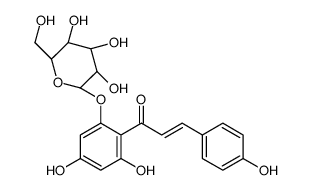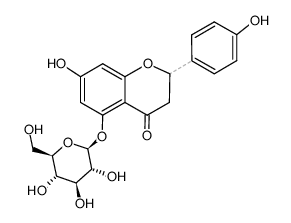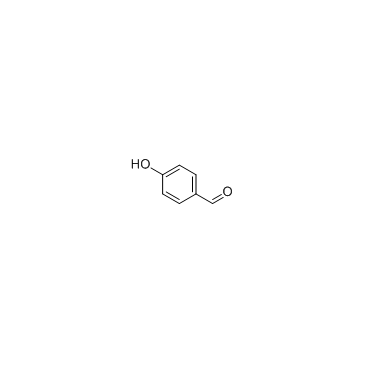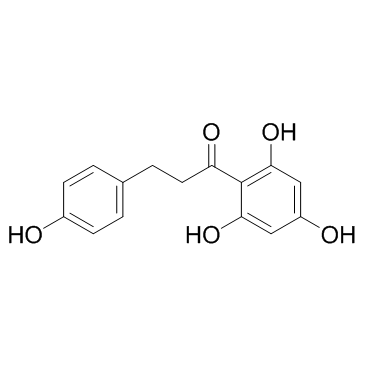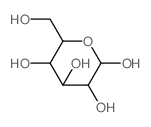60-81-1
| 中文名 | 根皮苷 |
|---|---|
| 英文名 | phlorizin |
| 中文别名 |
果树根皮精
1-(2-(Β-D-吡喃葡萄糖氧基)-4,6-二羟基苯基)-3-(4-羟基苯基)-丙酮 1-(2-(beta-D-吡喃葡萄糖氧基)-4,6-二羟基苯基)-3-(4-羟基苯基)-丙酮 1-(2-(beta-D-吡喃葡萄糖氧基)-4,6-二羟基苯基)-3-(4-羟基苯基)-丙酮 1-[2-(beta-D-吡喃葡萄糖基氧基)-4,6-二羟基苯基]-3-(4-羟基苯基)-1-丙酮 根皮甙 根皮甙,1-(2-(β-D-吡喃葡萄糖氧基)-4,6-二羟基苯基)-3-(4-羟基苯基)-丙酮 |
| 英文别名 |
phlorizoside
4,6-dihydroxy-2-(β-D-glucosido)-β-(p-hydroxyphenyl)propiophenone 3,5-Dihydroxy-2-[3-(4-hydroxyphenyl)propanoyl]phenyl-β-D-glucopyranoside 1-(2,4-Dihydroxy-6-{[(2S,3R,4S,5S,6R)-3,4,5-trihydroxy-6-(hydroxymethyl)tetrahydro-2H-pyran-2-yl]oxy}phenyl)-3-(4-hydroxyphenyl)-1-propanone phloridzosid phloridzine Phlorrhizen phloretin 2'-O-glucoside 1-Propanone, 1-[2-(β-D-glucopyranosyloxy)-4,6-dihydroxyphenyl]-3-(4-hydroxyphenyl)- Phlorizin Isosalipurposide Phloretin-2'-b-glucoside Phloridzin Phlorhizin 3,5-Dihydroxy-2-[3-(4-hydroxyphenyl)propanoyl]phenyl β-D-glucopyranoside 1-(2,4-Dihydroxy-6-{[(2S,3R,4S,5S,6R)-3,4,5-trihydroxy-6-(hydroxyméthyl)tétrahydro-2H-pyran-2-yl]oxy}phényl)-3-(4-hydroxyphényl)-1-propanone 1-[2-(β-D-Glucopyranosyloxy)-4,6-dihydroxyphenyl]-3-(4-hydroxyphenyl)-1-propanone 1-(2,4-Dihydroxy-6-{[(2S,3R,4S,5S,6R)-3,4,5-trihydroxy-6-(hydroxymethyl)tetrahydro-2H-pyran-2-yl]oxy}phenyl)-3-(4-hydroxyphenyl)-1-propanon 2'-(β-D-glucopyranosyloxy)-4',6'-dihydroxy-3-(4-hydroxyphenyl)propiophenone 4,6-Dihydroxy-2-(b-D-glucosido)-b-(p-hydroxyphenyl)propiophenone Phloretin-2'-O-glucoside Floridzin MFCD00006591 1-[2-(b-D-Glucopyranosyloxy)-4,6-dihydroxyphenyl]-3-(4-hydroxyphenyl)-1-propanone 1-Propanone, 1-(2-(β-D-glucopyranosyloxy)-4,6-dihydroxyphenyl)-3-(4-hydroxyphenyl)- Phloretin-2'-β-glucoside phlorrhizin EINECS 200-487-1 |
| 描述 | Phlorizin 是一种非选择性的 SGLT 抑制剂,对于 hSGLT1 和 hSGLT2 的 Ki 值分别为 300 和 39 nM。Phlorizin 也是一个 Na+/K+-ATPase 抑制剂。 |
|---|---|
| 相关类别 | |
| 靶点 |
Ki: 300 nM (hSGLT1), 39 nM (hSGLT2)[1] Na+/K+-ATPase[2] |
| 体外研究 | Phlorizin是一种非选择性SGLT抑制剂,hSGLT1和hSGLT2的Kis分别为300和39 nM [1]。 Phlorizin也是Na +/K + -ATPase抑制剂[2]。 2×10-4M的Phlorizin抑制人红细胞膜中Na +和Rb +激活的ATP酶活性43%。在1 mM和7 mM RbCl时,rub吸收不会被2×10-4 M Phlorizin改变或略微抑制(小于15%)[2]。 Phlorizin <100μM的剂量不会显着改变细胞活力。用Phlorizin预处理细胞不会显着降低亚硝酸盐或PGE2水平。 Phlorizin不抑制IL-6或TNF-α的产生,尽管100μM的Phlorizin可以显着抑制TNF-α的表达[3]。 |
| 体内研究 | 在Phlorizin治疗之前,SDT肥胖大鼠的血糖水平为370±49mg/dL。给药后6小时,根皮苷治疗组的血糖水平降至几乎正常水平(139±32mg/dL)。在12周后,根皮苷治疗的SDT肥胖大鼠比媒介物处理的SDT肥胖大鼠更重。根皮苷治疗显着降低葡萄糖排泄并延迟胰岛素降低。根据Phlorizin处理,肌酐清除率显着降低。 Phlorizin治疗23周可防止神经纤维减少(23.6±3.2纤维/ mm)。 Phlorizin可完全阻止视网膜异常[4]。 |
| 激酶实验 | 当红细胞溶血时,通过添加4×10-3M ATP和5×10-3M MgCl2(有或没有5×10-4M Phlorizin(终浓度))获得重新密封的重影。将对应于0.4-0.45mL原始血细胞的鬼与0.9mL培养基A和86RbCl一起孵育45或90分钟,并测定200μL上清液中的放射性。重新密封的重影中的ATP酶活性是由孵育后无机磷酸盐的增加决定的[1]。 |
| 细胞实验 | 使用RAW264.7鼠巨噬细胞衍生的细胞系。使用3-(4,5-二甲基噻唑-2-基)-2,5-二苯基四唑溴化物(MTT)测定法测量细胞活力。将细胞(105个细胞/孔)在96孔板中培养,并用不同浓度的Phlorizin处理24小时。接下来,除去上清液,将细胞与MTT(50mg / mL)在37℃下孵育4小时。洗涤板并加入异丙醇以溶解形态区晶体,然后使用酶标仪在570nm处测量吸光度值[3]。 |
| 动物实验 | 在该研究中使用雌性SDT肥胖大鼠。在6周龄时,将SDT肥胖大鼠分成两组(n = 8); Phlorizin治疗组和媒介物治疗组。年龄匹配的雌性Sprague-Dawley(SD)大鼠用作对照动物(n = 8)。将动物饲养在气候控制室内(温度23±3℃,湿度55±15%,光照周期12小时)并允许自由获取基础饮食和水。将Phlorizin每日一次(100mg / kg /天)皮下注射到Phlorizin治疗组的动物中23周。向载体处理组和对照SD大鼠的动物施用20%丙二醇[4]。 |
| 参考文献 |
| 密度 | 1.6±0.1 g/cm3 |
|---|---|
| 沸点 | 770.0±60.0 °C at 760 mmHg |
| 熔点 | 113-114 °C(lit.) |
| 分子式 | C21H24O10 |
| 分子量 | 436.409 |
| 闪点 | 270.7±26.4 °C |
| 精确质量 | 436.136932 |
| PSA | 177.14000 |
| LogP | 0.45 |
| 外观性状 | 淡黄色粉末 |
| 蒸汽压 | 0.0±2.8 mmHg at 25°C |
| 折射率 | 1.686 |
| 储存条件 | 本品应密封阴凉干燥保存。 |
| 分子结构 | 1、 摩尔折射率:106.75 2、 摩尔体积(m3/mol):280.5 3、 等张比容(90.2K):839.3 4、 表面张力(dyne/cm):80.1 5、 极化率(10 -24cm 3):42.32 |
| 计算化学 | 1.疏水参数计算参考值(XlogP):无 2.氢键供体数量:7 3.氢键受体数量:10 4.可旋转化学键数量:7 5.互变异构体数量:42 6.拓扑分子极性表面积177 7.重原子数量:31 8.表面电荷:0 9.复杂度:581 10.同位素原子数量:0 11.确定原子立构中心数量:5 12.不确定原子立构中心数量:0 13.确定化学键立构中心数量:0 14.不确定化学键立构中心数量:0 15.共价键单元数量:1 |
| 更多 | 1. 性状:白色轻质细长针状小结晶,味先甜而后苦 2. 密度(g/mL,25/4℃):1.4298g/cm3 3. 相对蒸汽密度(g/mL,空气=1):未确定 4. 熔点(ºC):109 5. 沸点(ºC,常压):未确定 6. 沸点(ºC,5.2kPa):未确定 7. 折射率:未确定 8. 闪点(ºC):未确定 9. 比旋光度(º):未确定 10. 自燃点或引燃温度(ºC):未确定 11. 蒸气压(kPa,25ºC):未确定 12. 饱和蒸气压(kPa,60ºC):未确定 13. 燃烧热(KJ/mol):未确定 14. 临界温度(ºC):未确定 15. 临界压力(KPa):未确定 16. 油水(辛醇/水)分配系数的对数值:未确定 17. 爆炸上限(%,V/V):未确定 18. 爆炸下限(%,V/V):未确定 19. 溶解性:能溶于热水、乙醇、甲醇、戊醇、丙酮、乙酸乙酯、吡啶、冰乙酸等,不溶于醚、氯仿和苯。 |
|
Section I.Chemical Product and Company Identification Chemical Name Phlorizin Portland OR SynonymPhloridzin Chemical FormulaC21H24O10•2H2O CAS Number60-81-1 Section II.Composition and Information on Ingredients Chemical NameCAS Number Percent (%)TLV/PELToxicology Data Phlorizin60-81-1Min. 97.0 (T) Not available.Mouse LD (intraperitoneal) >500mg/kg Section III. Hazards Identification Acute Health EffectsIrritating to eyes and skin on contact. Inhalation causes irritation of the lungs and respiratory system. Inflammation of the eye is characterized by redness, watering, and itching. Skin inflammation is characterized by itching, scaling, reddening, or, occasionally, blistering. Follow safe industrial hygiene practices and always wear proper protective equipment when handling this compound. Chronic Health EffectsCARCINOGENIC EFFECTS : Not available. MUTAGENIC EFFECTS : Not available. TERATOGENIC EFFECTS : Not available. DEVELOPMENTAL TOXICITY: Reproductive: rat (intraperitoneal) 600mg/kg. Duration: female 8 days of pregnancy. Effects on fertility- Post-implantation mortality. There is no known effect from chronic exposure to this product. Repeated or prolonged exposure to this compound is not known to aggravate existing medical conditions. Section IV.First Aid Measures Eye ContactCheck for and remove any contact lenses. IMMEDIATELY flush eyes with runing water for at least 15 minutes. keeping eyelids open. COLD water may be used. DO NOT use an eye oitment. Flush eyes with running water for a minimum of 15 minutes, occasionally lifting the upper eyelids. Seek medical attention. Treat symptomatically and supportively. Skin ContactAfter contact with skin, wash immediately with plenty of water. Gently and thorough wash the contaminated skin with running water and non-abrasive soap. Be particularly careful to clean folds, crevices, creases and groin. COLD water may be used. Cover the irritated skin with an emollient. Seek medical attention. Treat symptomatically and supportively. Wash any contaminated clothing before reusing. InhalationIf the victim is not breathing, perform artificial respiration. Loosen tight clothing such as a collar, tie, belt or waistband. If breathing is difficult, oxygen can be administered. Seek medical attention. Treat symptomatically and supportively. IngestionINDUCE VOMITING by sticking finger in throat. Lower the head so that the vomit will not reenter the mouth and throat. Loosen tight clothing such as a collar, tie, belt, or waistband. If the victim is not breathing, administer artificial respiration. Examine the lips and mouth to ascertain whether the tissues are damaged, a possible indication that the toxic material was ingested; the absence of such signs, however, is not conclusive. Seek immediate medical attention and, if possible, show the chemical label. Treat symptomatically and supportively. Section V.Fire and Explosion Data Auto-IgnitionNot available. FlammabilityMay be combustible at high temperature. Flash PointsFlammable LimitsNot available. Not available. Combustion Products These products are toxic carbon oxides (CO, CO 2). Fire Hazards No specific information is available regarding the flammability of this compound in the presence of various materials. Risks of explosion of the product in presence of mechanical impact: Not available. Explosion Hazards Risks of explosion of the product in presence of static discharge: Not available. No additional information is available regarding the risks of explosion. Fire Fighting Media SMALL FIRE: Use DRY chemicals, CO 2, water spray or foam. LARGE FIRE: Use water spray, fog or foam. DO NOT use water jet. and Instructions Continued on Next Page Phlorizin Section VI.Accidental Release Measures Spill CleanupIrritating material. InstructionsIn case of a spill and/or a leak, always shut off any sources of ignition, ventilate the area, and exercise caution. Use a shovel to put the material into a convenient waste disposal container. Finish cleaning the spill by rinsing any contaminated surfaces with copious amounts of water. Consult federal, state, and/or local authorities for assistance on disposal. Section VII. Handling and Storage IRRITANT. Keep away from heat and sources of ignition. Mechanical exhaust required. When not in use, tightly seal the Handling and Storage container and store in a dry, cool place. Avoid excessive heat and light. DO NOT breathe dust. Information Always store away from incompatible compounds such as oxidizing agents. Section VIII. Exposure Controls/Personal Protection Engineering ControlsUse process enclosures, local exhaust ventilation, or other engineering controls to keep airborne levels below recommended exposure limits. If user operations generate dust, fume or mist, use ventilation to keep exposure to airborne contaminants below the exposure limit. Personal ProtectionSplash goggles. Lab coat. Dust respirator. Boots. Gloves. Be sure to use a MSHA/NIOSH approved respirator or equivalent. Suggested protective clothing might not be sufficient; consult a specialist BEFORE handling this product. Exposure LimitsNot available. Section IX. Physical and Chemical Properties Solubility Physical state @ 20°CYellow powder.1g dissolves in water @ 22°C, 64mL water @ 60°C, 22mL water @ 70°C. Not available.Freely soluble in boiling water, in about 4 Specific Gravity parts alcohol, methanol, amyl alcohol, acetone, ethyl acetate, pyridine, aniline. Practically insoluble in ether, chloroform and benzene. Molecular WeightPartition Coefficient 436.41 (Anh)Not available. Boiling PointVapor Pressure Not available.Not available. Melting Point110°C (230°F)Vapor DensityNot available. Refractive IndexNot available.VolatilityNot available. Critical TemperatureNot available.OdorNot available. ViscosityNot available.TasteSweet with biter aftertaste. Section X.Stability and Reactivity Data Stability This material is stable if stored under proper conditions. (See Section VII for instructions) Conditions of InstabilityAvoid excessive heat and light. Incompatibilities Reactive with strong oxidizing agents. Section XI. Toxicological Information RTECS NumberUC2080000 Eye contact. Ingestion. Inhalation. Skin contact. Routes of Exposure Toxicity DataMouse LD (intraperitoneal) >500mg/kg Chronic Toxic EffectsCARCINOGENIC EFFECTS : Not available. MUTAGENIC EFFECTS : Not available. TERATOGENIC EFFECTS : Not available. DEVELOPMENTAL TOXICITY: Reproductive: rat (intraperitoneal) 600mg/kg. Duration: female 8 days of pregnancy. Effects on fertility- Post-implantation mortality. There is no known effect from chronic exposure to this product. Repeated or prolonged exposure to this compound is not known to aggravate existing medical conditions. Acute Toxic EffectsIrritating to eyes and skin on contact. Inhalation causes irritation of the lungs and respiratory system. Inflammation of the eye is characterized by redness, watering, and itching. Skin inflammation is characterized by itching, scaling, reddening, or, occasionally, blistering. Follow safe industrial hygiene practices and always wear proper protective equipment when handling this compound. Continued on Next Page Phlorizin Section XII.Ecological Information EcotoxicityNot available. Not available. Environmental Fate Section XIII. Disposal Considerations Recycle to process, if possible. Consult your local or regional authorities. You may be able to dissolve or mix material with Waste Disposal a combustible solvent and burn in a chemical incinerator equipped with an afterburner and scrubber system. Observe all federal, state, and local regulations when disposing of the substance. Section XIV. Transport Information DOT ClassificationNot a DOT controlled material (United States). Not applicable. PIN Number Proper Shipping Name Not applicable. Packing Group (PG)Not applicable. DOT Pictograms Section XV. Other Regulatory Information and Pictograms TSCA Chemical InventoryThis product is NOT on the EPA Toxic Substances Control Act (TSCA) inventory. The following notices are required by 40 CFR 720.36 (C) for those products not on the inventory list: (EPA) (i) These products are supplied solely for use in research and development by or under the supervision of a technically qualified individual as defined in 40 CFR 720.0 et sec. (ii) The health risks of these products have not been fully determined. Any information that is or becomes available will be supplied on an MSDS sheet. WHMIS ClassificationNot available. (Canada) EINECS Number (EEC) 200-487-1 EEC Risk StatementsR36/37/38- Irritating to eyes, respiratory system and skin. SECTION 16 - ADDITIONAL INFORMATION N/A |
|
毒理学数据: 1 、急性毒性:小鼠腹腔LD:>500mg/kg 2、繁殖毒性: 雌性大鼠腹腔TDLo:600mg/kg,8天后受孕 CHEMICAL IDENTIFICATION
HEALTH HAZARD DATAACUTE TOXICITY DATA
|
| 危害码 (欧洲) | Xi: Irritant; |
|---|---|
| 风险声明 (欧洲) | R36/37/38 |
| 安全声明 (欧洲) | S26-S36 |
| WGK德国 | 3 |
| RTECS号 | UC2080000 |
|
~% 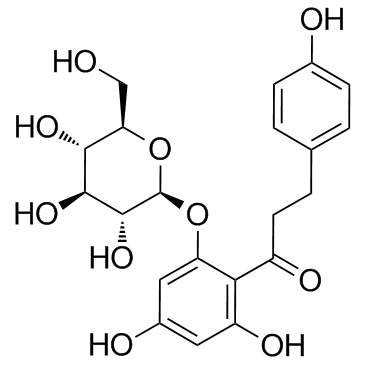
60-81-1 |
| 文献:Chemische Berichte, , vol. 75, p. 1040,1041 |
|
~% 
60-81-1 |
| 文献:Chemische Berichte, , vol. 76, p. 386,388, |
|
~% 
60-81-1 |
| 文献:Chemische Berichte, , vol. 75, p. 1040,1041 |


